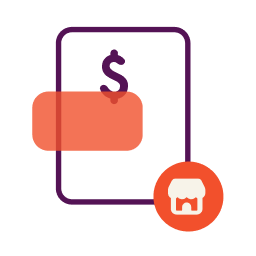- Successful business tax planning can impact your business’s bottom line and long-term growth.
- It’s important to make the most of tax write-offs and credits to lower your business’s tax liability and pay lower taxes.
- Learn the best tax planning strategies for small businesses in this article from Nav’s experts to prepare for this coming tax season.
Importance of Tax Planning for Small Businesses
Tax planning is essential for small businesses since it serves as a strategic financial tool that can significantly impact their bottom line. By proactively managing tax obligations, small business owners can unlock opportunities for cost savings and make sure that they maximize deductions, credits, and incentives available to them.
This not only results in immediate financial relief but also helps with cash flow management, allowing businesses to allocate resources more efficiently.
Furthermore, year-end tax planning enables small businesses to stay compliant with ever-evolving tax laws, reducing the risk of penalties and legal issues. Choosing the right business entity, optimizing investment strategies, and implementing retirement and succession planning are integral aspects of tax planning that contribute to the long-term financial health and sustainability of small businesses.
Ultimately, effective tax planning empowers small businesses to navigate the complexities of the tax landscape, make informed financial decisions, and position themselves for growth and success in a competitive marketplace.
Overview of Major Tax Changes That Will Impact Small Businesses in 2024
Let’s look at the major changes happening to taxes in 2024 that might affect your business.
Changes to Income Tax Rates
Annual changes to income tax rates typically occur due to various economic, fiscal, and political factors. Governments adjust income tax rates as a way to manage fiscal policy, generate revenue, address economic challenges, and respond to social and political pressures.
Also, inflation erodes the purchasing power of money over time. To account for inflation and maintain the real value of tax revenue, governments may adjust tax brackets and rates periodically.
New tax brackets for 2024
A tax bracket is a range of income levels that determines the rate at which an individual or business is taxed. As someone’s income increases and moves into a higher bracket, the applicable tax rate on that portion of income also goes up.
There are still seven tax brackets, which is the same as last year, but the income levels increased.
| 2024 Tax Brackets | |
| Married filing jointly | Single filer |
| 10%: $0 to $23,200 | 10%: $0 to $11,600 |
| 12%: $23,201 to $94,300 | 12%: $11,601 to $47,150 |
| 22%: $94,301 to $201,050 | 22%: $47,151 to $100,525 |
| 24%: $201,051 to $383,900 | 24%: $100,526 to $191,950 |
| 32%: $383,901 to $487,450 | 32%: $191,951 to $243,725 |
| 35%: $487,451 to $731,200 | 35%: $243,726 to $609,350 |
| 37%: $731,200 or more | 37%: $609,351 or more |
Changes to corporate income tax rates
The corporate tax rate is the percentage of a company’s profits that it is required to pay in taxes to the government. This tax is applied to a corporation’s taxable income — or revenue minus allowable business expenses and other deductions. This tax is paid by corporations and not other business entities, like LLCs or sole proprietorships.
The U.S. corporate income tax rate will remain the same — at 21% — in 2024. In early 2023, President Biden had proposed raising the rate to 28%. However, the proposal fell through, so it will stay steady in 2024.
Impact on small business owners’ personal income taxes
Your business’s tax impact on your personal tax returns depends on what kind of entity you run. If you’re a sole proprietor or LLC, your business taxes will automatically pass through to your personal taxes. That means you’ll file one return for both yourself and your business. As an LLC, you can choose to be taxed as a corporation if it makes the most financial sense.
Tax Deductions and Credits
Tax deductions and credits are both used to reduce a taxpayer’s overall tax liability, but they work differently.
- Tax deductions: Reduce taxable income, meaning the amount of income you bring in that can be taxed. Deductions can include eligible business expenses or certain itemized deductions.
- Tax credits: Directly reduce the amount of taxes owed. Credits are typically tied to specific actions, expenses, or circumstances, like education expenses, child care costs, or energy-efficient home improvements.
While deductions provide savings by lowering the taxable income, tax credits offer a dollar-for-dollar reduction in the actual tax liability.
Extension and changes to small business tax deductions
A standard tax deduction is a fixed amount that eligible taxpayers can subtract from their adjusted gross income to reduce their taxable income, simplifying the tax filing process. It serves as a baseline deduction for people who don’t itemize specific expenses like mortgage interest or charitable contributions.
In other words, if your deductions don’t exceed what’s on the list below, you’re better off taking the standard deduction.
Here are the standard deductions for 2024:
- Single: $14,600 (up from $13,850)
- Married filing jointly: $29,200 (up from $27,700)
- Married filing separately: $14,600 (up from $13,850)
- Head of household: $21,900 (up from $20,800)
Section 179 deduction
The Section 179 deduction allows businesses to deduct the full purchase price (with a maximum of $1,160,000 in 2023) of qualifying equipment and software in the year it was purchased, rather than depreciating it over time. This deduction is designed to incentivize small and medium-sized businesses to invest in capital assets, like machinery, vehicles, or office equipment. So this deduction can give you tax relief while helping you maintain your business’s property.
Qualified Business Income deduction
The Qualified Business Income deduction is a U.S. tax benefit that lets certain businesses deduct up to 20% of their qualified business income. If you own a sole proprietorship, partnership, S corporation, or a specific type of trust or estate, you may be able to get the Qualified Business Income deduction. Eligible businesses must generally operate in qualified fields and meet specific income thresholds. The deduction is designed to help small business owners and entrepreneurs by reducing their taxable income, fostering business growth, and promoting investment. According to the IRS, “the deduction is available regardless of whether taxpayers itemize deductions on Schedule A or take the standard deduction.”
New and expanded small business tax credits
It’s always good to keep an eye out for new tax credits, or those that may expand to allow you to qualify for them. Here are two important credits you may not have heard of.
Employee Retention Credit
If your business has employees, you may still qualify for the Employee Retention Credit (ERC). The ERC is a tax credit that encourages businesses, particularly those adversely affected by the COVID-19 pandemic, to hold onto their employees. Employers can claim the credit for a percentage of qualified wages paid to employees during the pandemic. Learn more in this article from Nav’s experts.
Paid Family Leave Credit
The Employer Credit for Paid Family and Medical Leave helps business owners provide paid leave to their employees for qualified family and medical reasons. Employers may be eligible for a tax credit ranging from 12.5% to 25% of the wages paid to qualifying employees during their family or medical leave, depending on the percentage of the employee’s regular wages paid during the leave period. To qualify, employers must have a written policy in place that provides at least two weeks of paid family and medical leave annually to qualifying full-time employees.
Retirement Plans
It’s especially important as a small business owner to plan for retirement since you don’t have an employer taking out regular contributions to a retirement account. Here’s a breakdown of the changes to expect in the coming year.
Higher contribution limits for small business retirement plans
- Traditional or Roth IRA: Increasing to $7,000 per year.
- Solo 401(k): Increasing to $69,000 per year with catch-up contributions remaining at $7,500.
- SEP IRA: Increasing to $69,000 (or up to 25% of compensation or net self-employment earnings, whichever is less).
- SIMPLE IRA: Increasing to $16,000 with catch-up contributions remaining at $3,500.
Tax benefits of setting up a retirement plan
Establishing a retirement plan for your business offers several tax advantages. First off, contributions to qualified retirement plans are typically tax-deductible for your business, which reduces its taxable income and potential overall tax liability.
Additionally, employees contributing to these plans may enjoy tax benefits, including tax-deferred growth. In cases like a Roth IRA, they’ll get tax-free withdrawals in retirement. Employers may also qualify for tax credits, like the Retirement Plan Startup Cost Tax Credit, which can help offset the cost of starting a retirement plan.
A well-designed retirement plan not only helps employees in saving for the future but also can help your business save money.
Estimated Tax Payments
Now let’s explore what small business owners need to know about estimated tax payments.
Updated IRS rules for estimated quarterly tax payments
Self-employed individuals and businesses that make enough revenue pay quarterly taxes to the government.
Here’s a brief overview of the key points:
- Frequency: Quarterly tax payments are due four times a year, typically on April 15, June 15, September 15, and January 15 of the following year.
- Who pays: Might include self-employed individuals, freelancers, sole proprietors, partners in partnerships, and S corporation shareholders, among others.
- Calculating payments: Taxpayers estimate their annual income and deductions and calculate the estimated tax for the year. The IRS provides Form 1040-ES to help business owners do the math for their estimated tax liability.
Although there aren’t any big changes in store for 2024, it’s important to keep an eye out for possible changes in the future.
Strategies to avoid underpayment penalties
If you fail to pay (or don’t pay enough) in quarterly tax payments, you might face an underpayment penalty. Common situations leading to underpayment penalties include insufficient withholding from wages, failure to make required quarterly estimated tax payments, or significant changes in income that were not adequately addressed.
For example, you may have to pay this fine if you hand over less than 90% of the current year’s taxes. Therefore, it’s crucial for small business owners to stay informed about their tax obligations, make accurate estimated payments, and adjust their withholding to avoid potential penalties and interest on the underpaid amount.
Year-End Tax Planning Strategies
It’s important to prepare for the end of the year ahead of time based on your business structure. Working with a professional helps you stay up to date on tax changes, like the 2017 Tax Cuts and Job Act (TCJA). Whether you have a sole proprietorship, a limited liability company (LLC), an S corporation, or a C corporation, using a tax advisor, CPA, or tax software can help make sure your business taxes are accurate.
Planning ahead also provides time to organize and gather necessary documentation, which helps you make sure to file on time. Additionally, some tax-saving strategies and deductions may have specific deadlines or requirements that need to be met before the end of the tax year. Planning in advance allows businesses to take advantage of these opportunities.
Lastly, early planning helps avoid the rush and stress associated with last-minute tax preparations, reducing the risk of errors and ensuring compliance with tax regulations. Overall, strategic planning for year-end business taxes is essential for financial management, tax efficiency, and compliance with legal obligations.
Ways to reduce tax bill as a small business
There are many ways you may be able to help lower your tax bill as a small business owner, including:
- Defer income: Delaying billing clients or customers until next year can lower taxable income for the current year. It’s best to do this only if you know that you’ll stay in the same tax bracket the following year.
- Accelerate deductions: Making expenditures like inventory purchases, business supplies, and equipment upgrades before year-end can provide tax deductions for the current year. This can be a good idea to do one year to beat the standard deduction. The next year, you could skimp on expenses the following year and plan to spend less than the standard deduction (since you would get the same deduction no matter how much you spend).
- Bonus depreciation: You can deduct up to 100% on eligible assets purchased for business purposes by December 31, which can maximize deductions.
- Section 179 deduction: Deducting on qualifying equipment under Section 179 can reduce taxable income.
- Retirement plan contributions: Making deductible 401(k) or SIMPLE IRA contributions by December 31 can lower business income taxed at the owner’s personal rate.
- Business equipment purchases: Buying necessary equipment, property, or vehicles for the business before year-end may entitle you to valuable tax deductions and credits.
- Charitable donations: Businesses can deduct qualified charitable contributions made by December 31. Consider donating inventory or services.
- Tax loss harvesting: Selling investments at a loss to offset capital gains and up to $3,000 of ordinary income can lower your tax burden.
- Tax estimates: If operating as a pass-through entity, carefully calculating your fourth quarter estimated payment to avoid underpayment penalties.
Summary of Major 2024 Tax Changes Impacting Small Businesses
Overall, there are a few changes that may help small business owners pay less in taxes. First, tax brackets are increasing, which means you’ll have to earn more to fall into a higher tax bracket. Also, retirement limits are higher, which means small business owners can contribute larger amounts to their retirement accounts.
These complicated changes can happen each year, which highlights why it’s essential to work with a tax professional or advisor.
How Nav Can Help
Nav is your small business partner. Don’t spend hours searching for what you need. Instead, use Nav to help you find the right software or service for business taxes that can help you maintain compliance and reduce your tax burden. Also, using the Cash Flow Health tool makes it easier to stay on top of your business’s finances and understand your borrowing power.



Have at it! We'd love to hear from you and encourage a lively discussion among our users. Please help us keep our site clean and protect yourself. Refrain from posting overtly promotional content, and avoid disclosing personal information such as bank account or phone numbers.
Reviews Disclosure: The responses below are not provided or commissioned by the credit card, financing and service companies that appear on this site. Responses have not been reviewed, approved or otherwise endorsed by the credit card, financing and service companies and it is not their responsibility to ensure all posts and/or questions are answered.